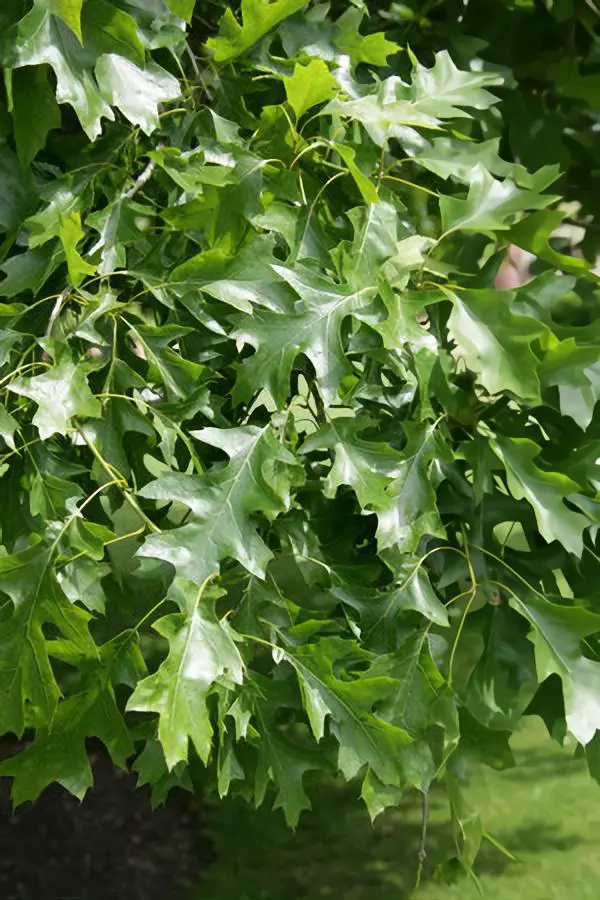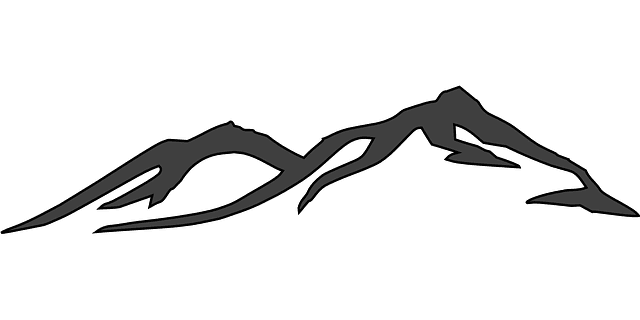The Shumard oak (Quercus Shumardii) is a deciduous hardwood tree belonging to the red oak group. It belongs to the Fagaceae family, which also includes Beech, Chestnut and Oak trees. It grows to a pyramidal shape in youth but over time grows wide and becomes more open, forming a much broader crown.
It’s native to North America, and can be found growing in the Atlantic coast plain to northern Florida and western parts of Texas. They are hardy USDA zones 5B through 9.
In addition to its native habitat, it has been introduced as an ornamental tree and has become naturalized in other parts of the United States.
This bold and majestic tree can grow upto 80 feet tall with a 50 to 60-foot spread. The tree’s canopy is narrow and rounded, similar to that of a Red Oak, making it an ideal addition to your yard.
Shumard Oak is known for its shade tolerance and drought resistance and adaptability to various soil types. The bark is gray-brown on young trees but becomes darker with age; it has deep furrows that resemble those of the white oak. The leaves are dark green and have 7–9 lobes that are coarsely toothed; they turn red in autumn before falling off early in winter. The acorns are short-stalked and mature in October or November; they are usually covered with dense hairs.
Shumard Oak Pros
Shumard Oak is a fast growing tree
Shumard Oak is a fast-growing tree that can grow 13 to 24 inches per year. These trees are generally considered good for landscaping and street planting.
Shumard Oak is resistant to pests and diseases
The Shumard Oak is resistant to pests, but it does suffer from some minor concerns.
The most common pest problems are galls, mites, scales, aphids, boring insects, leaf miner and twig pruners. These can be treated with a variety of pesticides or other methods, which should be followed closely by a professional arborist.
As always, the best way to prevent these pests from damaging your tree is through preventative care and good maintenance practices.
Galls are abnormal growths on the leaves of trees caused by insects or bacteria.
Mites are tiny arachnids that can cause damage to plant tissue.
Scales are small creatures that attach themselves to the outside of branches or leaves of plants and suck out nutrients from them with their sucking mouthparts.
Aphids are also tiny bugs that feed on plant sap and cause damage by excreting a sugary substance called honeydew which then becomes covered in sooty mold fungus causing a black coating on leaves and twigs.
Twig pruners are beetles whose larvae bore into saplings causing them to wilt while leaf miners tunnel into leaves eating out the tissue leaving visible trails behind them.
Shumard Oak is an attractive shade tree
Shumard Oak is an attractive shade tree. People grow it as a shade tree because of its attractive shape and shade. It has a narrow, pyramidal shape and the leaves are dark green and shiny.
The bark has a smooth texture with deep furrows and ridges. The twigs have corky ridges that turn light gray to brown in color with age. Shumard Oak grows best in full sun to partial shade and prefers moist soils. It can withstand drought conditions but prefers to be watered during periods of drought.
Shumard Oak tolerates drought and poor soil conditions
The Shumard Oak is a medium-sized deciduous tree that tolerates drought and poor soil conditions, making it an excellent choice for landscaping in areas with low rainfall or poor soil quality.
Because of their ability to thrive in low-rainfall areas, Shumard Oaks are often used along roadsides or other areas where water conservation efforts are required by law.
Their ability to thrive in poor soils also makes them popular choices for people who want to add beauty to their yard without having to worry about maintaining a regular watering schedule or paying higher prices at nurseries.
Attracts wildlife
The Shumard Oak produces acorns, or fruits that are oval or round in shape and range from .5 to 1 inch in length. These acorns are covered by dry or hard shells that can range in color from brown to yellowish green.
The Shumard Oak attracts squirrels and other mammals with its fruit because they provide sustenance and nutrition during the winter months when food is scarce in their natural habitat. The leaves of the tree are also used as nesting material for birds, so not only do you get delicious acorns on your property, but you also get some added bird watching opportunities!
Shumard Oak has an unusually long life span for an oak tree (100 to 200 years)
The Shumard Oak is an oak tree that has a life span of 100 to 200 years. The tree’s unusual longevity has been attributed to its resistance to pests and disease, as well as its ability to grow in a variety of soil conditions.
The Shumard Oak’s wood is strong enough for use in construction projects such as flooring or furniture making; however, due to its rarity many people today prefer not to harvest this wood from trees that are still alive because they believe that it would be disrespectful due to the fact that they may be hundreds of years old by the time they die naturally without any human interference whatsoever!
Shumard Oak Cons
Shumard Oak is susceptible to some diseases
The Shumard oak tree is susceptible to some diseases, most notably oak leaf blister and oak wilt.
Oak leaf blister is common in certain years, particularly those with a dry spring and warm summer. The disease attacks the leaves, causing them to develop small yellow-orange spots that then turn black or brown. The leaves eventually fall off, leaving behind small, round scars that look like blisters on the branches.
Oak wilt is caused by a fungus known as Ceratocystis fagacearum and can kill an entire tree within two years if left untreated. The first signs of the disease are yellowing leaves and twig dieback; if left untreated, these symptoms will spread throughout the tree and may even cause it to die suddenly without warning.
Acorn weevils (Curculio)
The Shumard Oak is susceptible to acorn weevils, which are small insects that attack the nut and leave it unable to grow into a tree.
Acorn weevils lay their eggs on the outside of the nut when it is still green and then chew through the shell to get inside. Once inside, they feed on the acorn’s inner parts until there is nothing left but a hollow shell. They typically attack nuts that have been stored for too long or nuts that have been infested by other insects first; however, they can also attack healthy nuts themselves if conditions are right for them to do so.
Conclusion
With all of these good things to say about the Shumard Oak, I think it’s safe to say that it’s a very suitable choice for any property owner.
This tree has good growth and decay rates, it has good resistance to major pests and diseases, and while it isn’t the tallest or the heaviest tree out there, it’s certainly a beautiful one and should be planted everywhere.
There is no reason not to plant this tree, as it is low maintenance for the homeowner, is beautifully colored year round, withstands droughts well, and does great in most soil conditions.
Plus, you have the added bonus of being able to use the leaves from this tree in composting with your yard waste easily (it makes an excellent nitrogen-rich compost when mixed with yard waste).
Also Read: Redpointe Maple Pros And Cons
